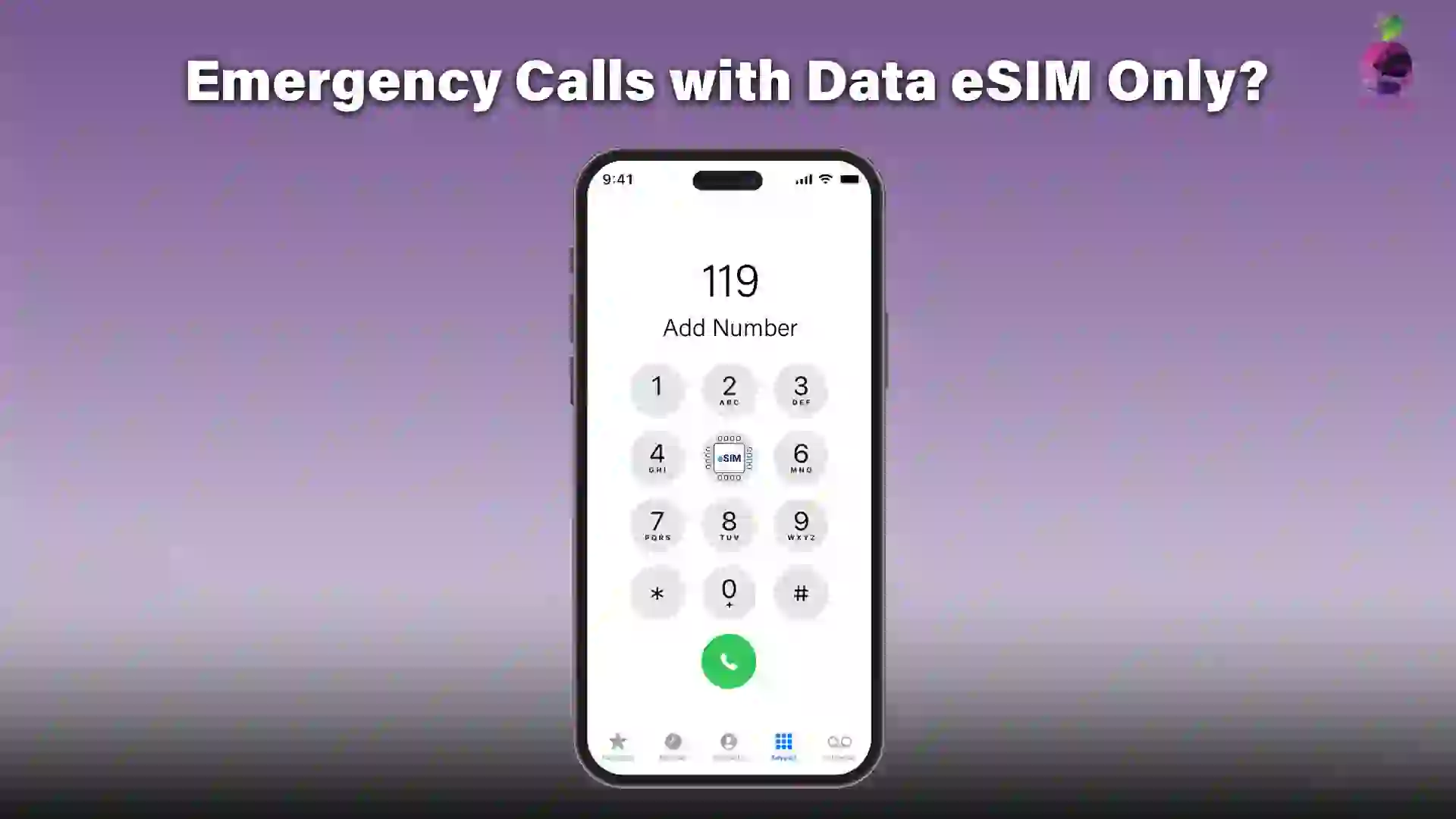 864.0 views
864.0 views
Can we make Emergency Calls with Data-Only SIMs during Travel
In the world of modern connectivity, Data-only SIMs and eSIMs have emerged as popular choices, offering flexibility and affordability, especially for those who primarily rely on data services rather than traditional voice communication.
Emergency calls remain possible with data-only SIMs and eSIMs, leveraging available mobile networks. However, users should be aware of potential variations in emergency call handling across different countries and service providers. One notable limitation is accurately identifying the caller's location, emphasizing the need for clear location details during emergencies.
While these alternatives offer cost-effective communication, users should acquaint themselves with the guidelines and limitations of emergency calling in their travel destinations. Staying informed ensures that connectivity remains reliable even without traditional phone numbers, particularly in urgent situations. In today's article, we will discuss whether it is possible to make emergency calls via data-only e-sim. So read the article till the end.
How Emergency Calls Work:
Emergency calls are an integral component of modern telecommunication systems, providing individuals with a rapid and efficient means of seeking assistance during critical situations. Embedded 3-digit numbers, such as 911 in the United States or 112 in many European countries, play a pivotal role in streamlining the emergency response process. These designated numbers serve as universal access points, allowing individuals to swiftly connect with emergency services, law enforcement, and medical professionals.
One key feature that enhances the effectiveness of emergency calls is prioritizing such calls over regular network traffic. This ensures that individuals facing life-threatening situations can immediately connect with emergency services. Moreover, the capability of mobile phones to seek any available network further contributes to the reliability of emergency calls. In the absence of a local network or when the primary network is unavailable, mobile devices are programmed to search for alternative networks. This functionality is particularly crucial in remote areas, during natural disasters, or when the local network infrastructure is
compromised. Mobile phones maximize the chances of successfully establishing an emergency call by seeking any available network, regardless of the prevailing
circumstances.
In addition to network prioritization, advancements in technology have introduced features such as Enhanced 911 (E911), which automatically provides emergency services with the caller's location information. This geolocation data is instrumental in reducing response times, as emergency responders can quickly and accurately locate individuals in
distress, especially when the caller is unable to provide their location verbally.
The global standardization of emergency numbers, like 911 and 112, has also facilitated international travel and communication. Individuals can rely on these familiar numbers across different countries, streamlining the process of seeking help in unfamiliar environments.
Emergency Calls Without a SIM Card:
Emergency calling capability on mobile phones is a critical feature that prioritizes public safety. The ability to make emergency calls is separate from a specific SIM card or eSIM in most cases. Emergency calls can typically be made even without an active SIM card as long as the phone is within range of a cell tower and has network connectivity. This is an essential aspect designed to ensure that individuals facing urgent situations can seek help, even if they don't have a regular mobile service plan or their SIM card is not functioning.
The functionality of emergency calls without a SIM card is mandated by regulatory bodies in many countries to guarantee that individuals in distress can quickly connect with emergency services. It recognizes that situations requiring emergency assistance can arise unexpectedly, and access to help should not be hindered by issues such as a missing or inactive SIM card.
However, it's important to note that regulations and requirements can vary between countries. For instance, some countries, like Germany and Switzerland may enforce rules that require a valid SIM card to make emergency calls. This measure is in place to prevent misuse of
emergency numbers and to facilitate effective emergency response. Having a registered SIM card can help authorities trace and identify the caller, ensuring that emergency services are directed to the right location.
Emergency Calls with Data-Only SIMs or eSIMs:
Emergency calls are a critical feature of mobile devices, providing users a lifeline in urgent situations. While having a valid SIM card or eSIM is generally required for making emergency calls, the rules regarding the type of SIM card or its origin can vary by country and mobile network operators. In many regions, including the United States and Europe,
regulations stipulate that any active SIM card or eSIM can be used to make emergency calls. This means that even if you have a data-only SIM or eSIM in your device, as long as your primary SIM card or eSIM is active and associated with a valid mobile number, you can place emergency calls.
However, it's important to note that using a data-only SIM or eSIM for emergency calls has its limitations. While you can initiate emergency calls without a traditional mobile number associated with the SIM card, you may not receive callbacks if the call is disconnected. Emergency services often rely on callback functionality to ensure the caller receives assistance promptly and gathers additional information. In some cases, emergency services may not be able to determine your location accurately when using a data-only SIM or eSIM, as these services typically rely on location information provided by traditional mobile networks. This limitation underscores the importance of having a primary SIM card or eSIM
with a valid mobile number for comprehensive emergency service access.
What we at Prune think
Travelling with data-only SIMs or eSIMs offers connectivity benefits, but ensuring a safe experience involves understanding emergency calls. Know the local emergency number, as it varies globally. Check if your SIM supports emergency voice calls or explore alternative communication methods like text messages. Responsible use of emergency numbers is crucial, as well as respecting local regulations and avoiding non-emergency calls. Additionally, familiarize yourself with contacting your embassy for non-medical emergencies, ensuring a well-rounded approach to safety during travel. Stay informed, be prepared, and contribute to a safer and considerate travel experience.
Why to buy Esim from Prune
- Seamless Activation: Prune ensures rapid activation, removing the necessity for in-person store visits or waiting for a physical SIM card.
- Cost Effective: Prune's e-sim prepaid plans allow you to buy data as per your requirements, helping you avoid extra charges for the services you don't use.
- Global Coverage: Prune offers e-SIM plans that work in many countries worldwide, ensuring you stay connected wherever you travel.
Is it possible to buy esim for someone else? Click here to know.
Stay connected with Prune for the latest technology blogs.

 Home
Home Buy SIM
Buy SIM





